
Argiope bruennichi JuzaPhoto
Argiope bruennichi, the European wasp spider, has been investigated intensively as a focal species for studies on sexual selection, chemical communication, and the dynamics of rapid range expansion at a behavioral and genetic level.However, the lack of a reference genome has limited insights into the genetic basis for these phenomena. Therefore, we assembled a high-quality chromosome-level.
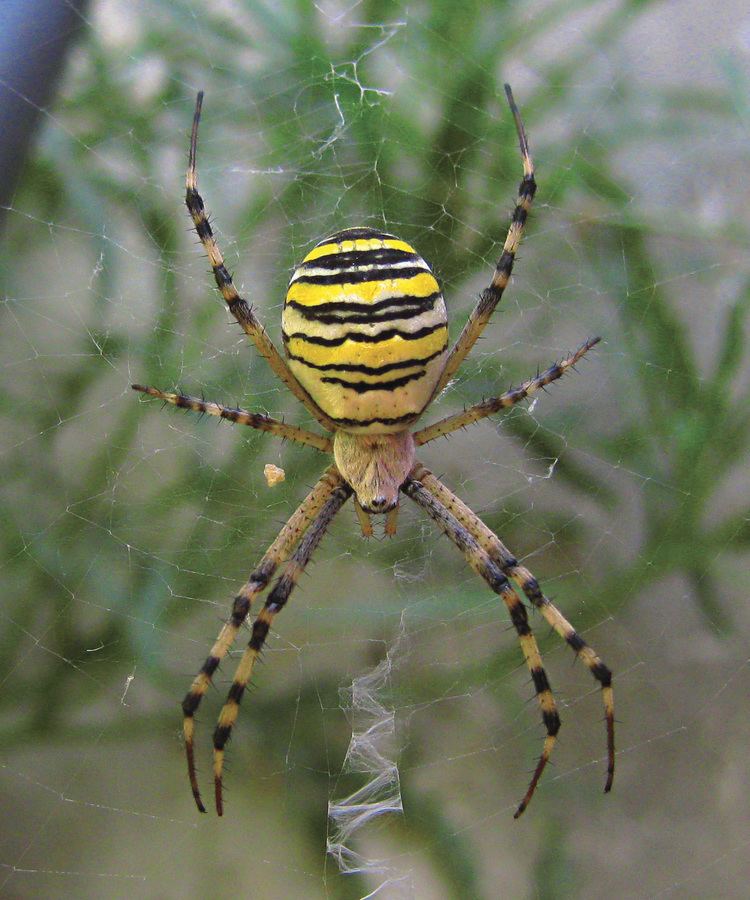
Argiope bruennichi Alchetron, The Free Social Encyclopedia
The wasp spider is a species of orb-web spider from the genus known as Argiope bruennichi. It has striking yellow and black markings on its abdomen, hence the name. It typically inhabits Mediterranean countries but has recently been colonised in the UK. Dawn or dusk is the time for spiral orb-web building by this black and yellow spider taking.

Wasp Spider (Argiope bruennichi) YouTube
Numerous species are expanding their ranges towards the North Pole, a pattern that is usually explained with climate change. However, few studies have actually tested the potential role of climate in such range expansions. Here, we studied the wasp spider Argiope bruennichi, which has multiplied its range in Central and Northern Europe during the 20th century and is still spreading. Using.
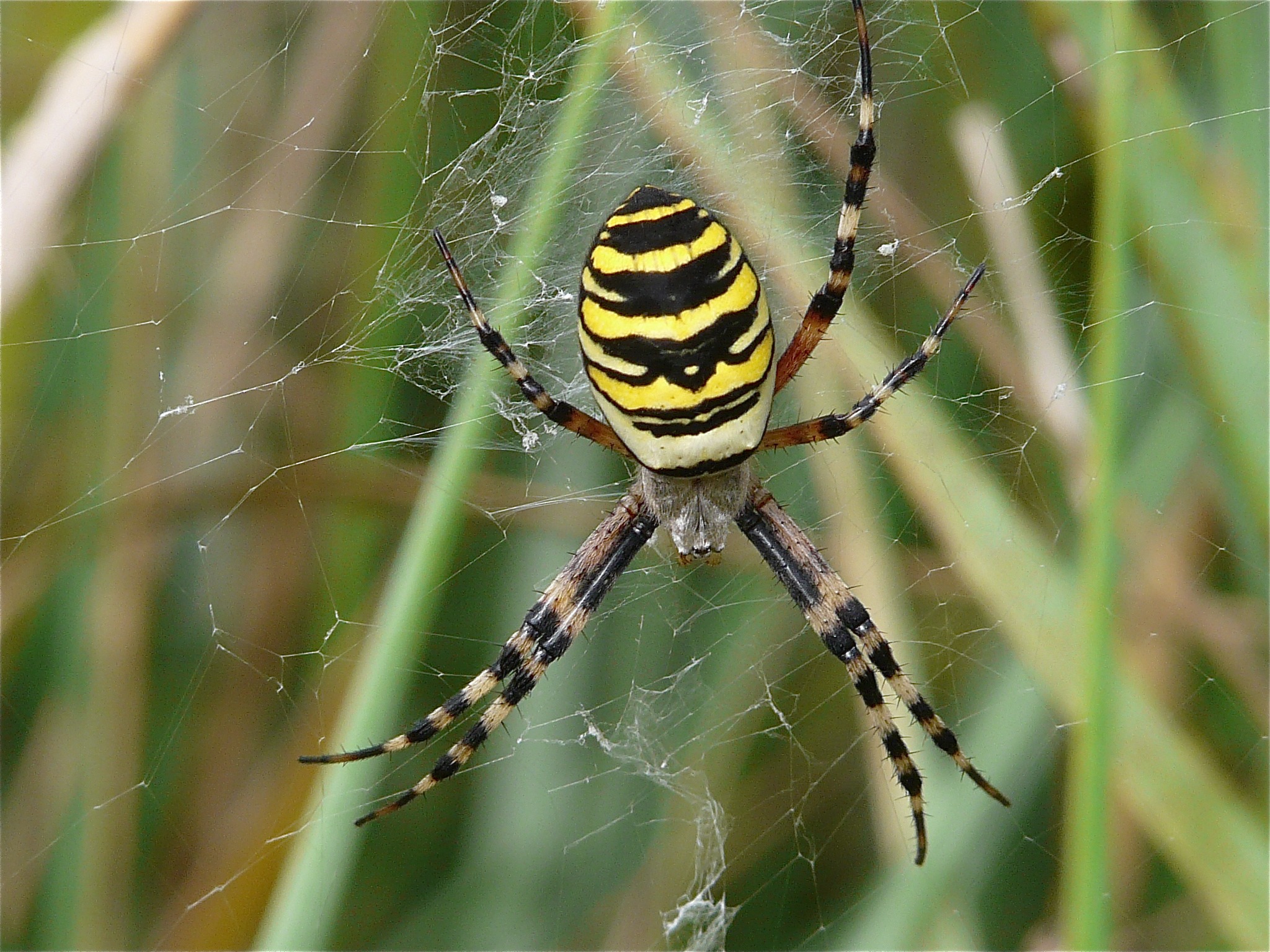
Argiope bruennichi La Galerie de Quel est cet Animal
The wasp spider is a very large, colourful spider that is a recent arrival in the UK from the continent and has slowly spread over the south of England. It builds large orb webs in grassland and heathland, and attaches its silk egg-sacs to the grasses. The web has a wide, white zig-zag strip running down the middle, known as a 'stabilimentum.
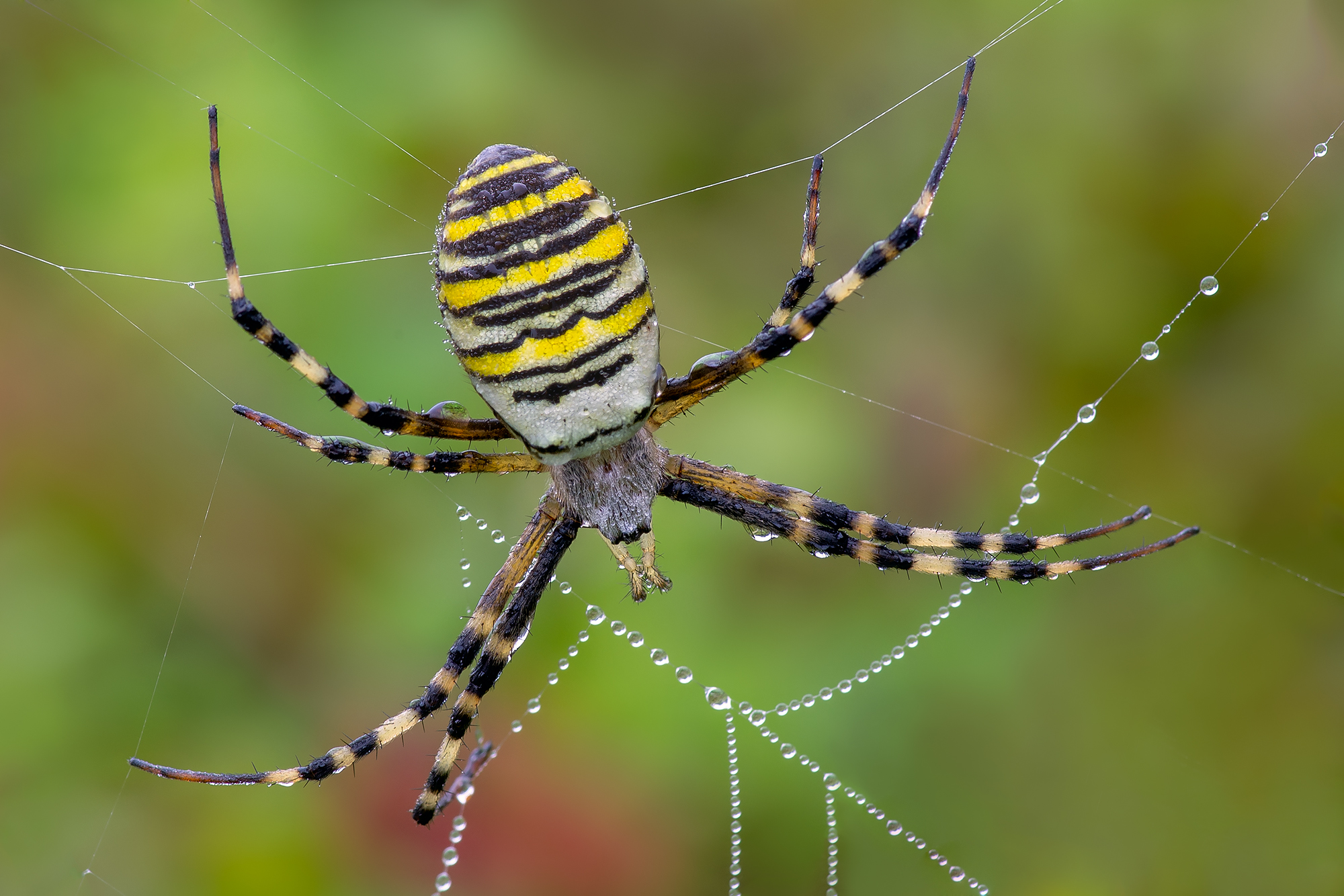
Argiope bruennichi JuzaPhoto
Type deposit provide information. Holotype: Senckenberg Museum, Frankfurt am Main (SMF), Germany (data base search of type material, 11.01.2019); f of Argiope bruennichi orientalis Strand, 1907; Holotype: British Museum of Natural History (BMNH)/Natural History Museum (NHMUK), London, UK; 1 specimen of Aranea fasciata Fabricius, 1775 (Zimsen, 1964).

العنكبوت Argiope Bruennichi لدغة العنكبوت قريبة صورة الخلفية والصورة
Adults. Size: They may vary in size, ranging between 5 mm and 35 mm. Color: The color and patterns vary from one species to the other. For instance, the Argiope aurantia has yellow and orange stripes with a black abdomen. On the other hand, the Argiope trifasciata has a silvery body with several black lines. The abdomens of most species of his.
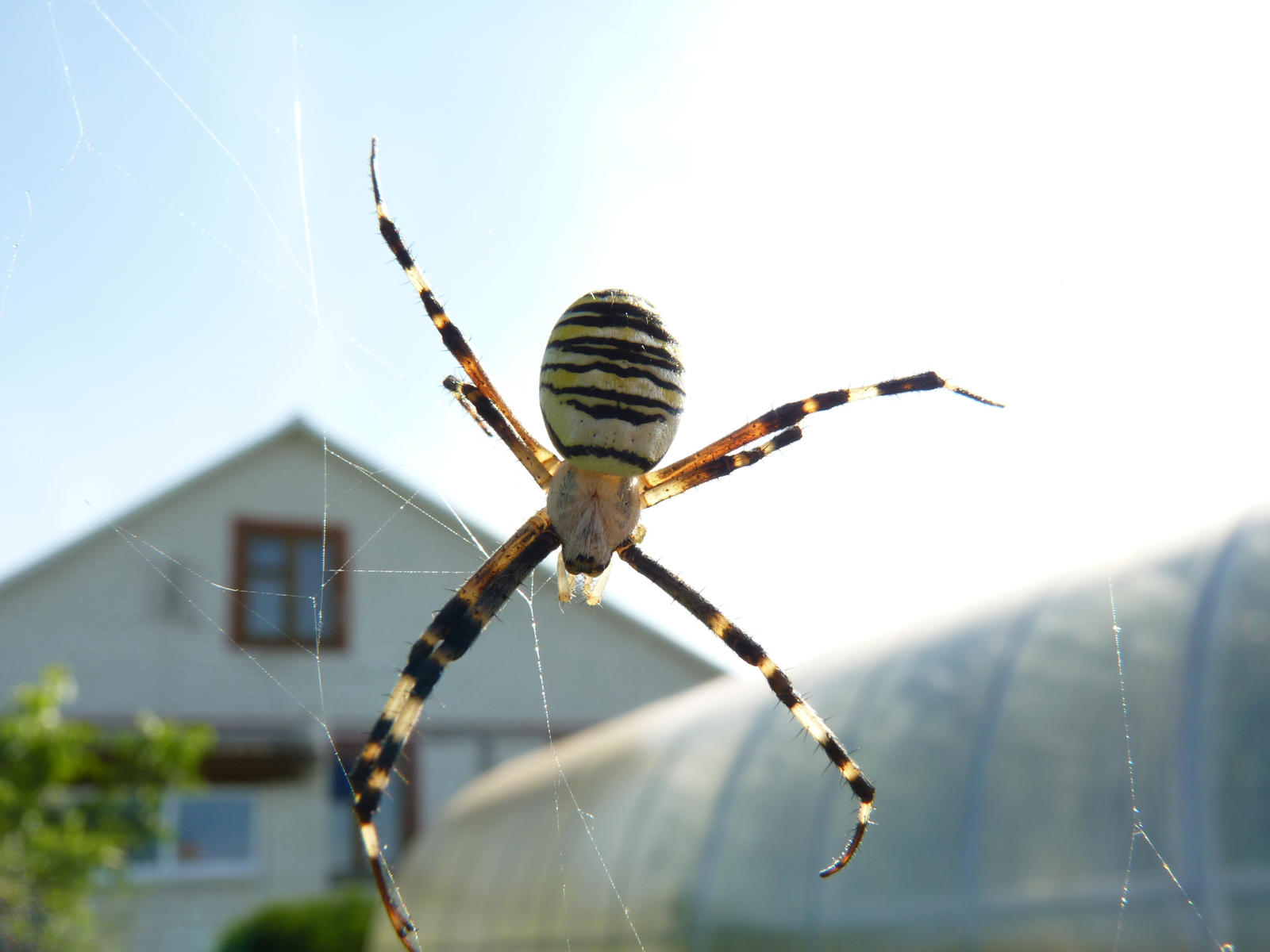
Argiope bruennichi by E1ectronik on DeviantArt
Argiope bruennichi is commonly known as the wasp spider. In Australia, Argiope keyserlingi and Argiope aetherea are known as St Andrew's cross spiders,. A bite by the black and yellow garden spider (Argiope aurantia) is comparable to a bee sting, with redness and swelling. For a healthy adult, a bite is not considered an issue.

Argiope bruennichi stock photo. Image of bite, close 35190234
Size: Females are around 0.59 inches (1.5 cm) long, and males have a length of 0.17 inches (0.45 cm). Color: Its body is a combination of yellow and black bands alongside stripes of white. Other Characteristic Features: They have long abdomens and legs with a wavy pattern of stripes running through their body.
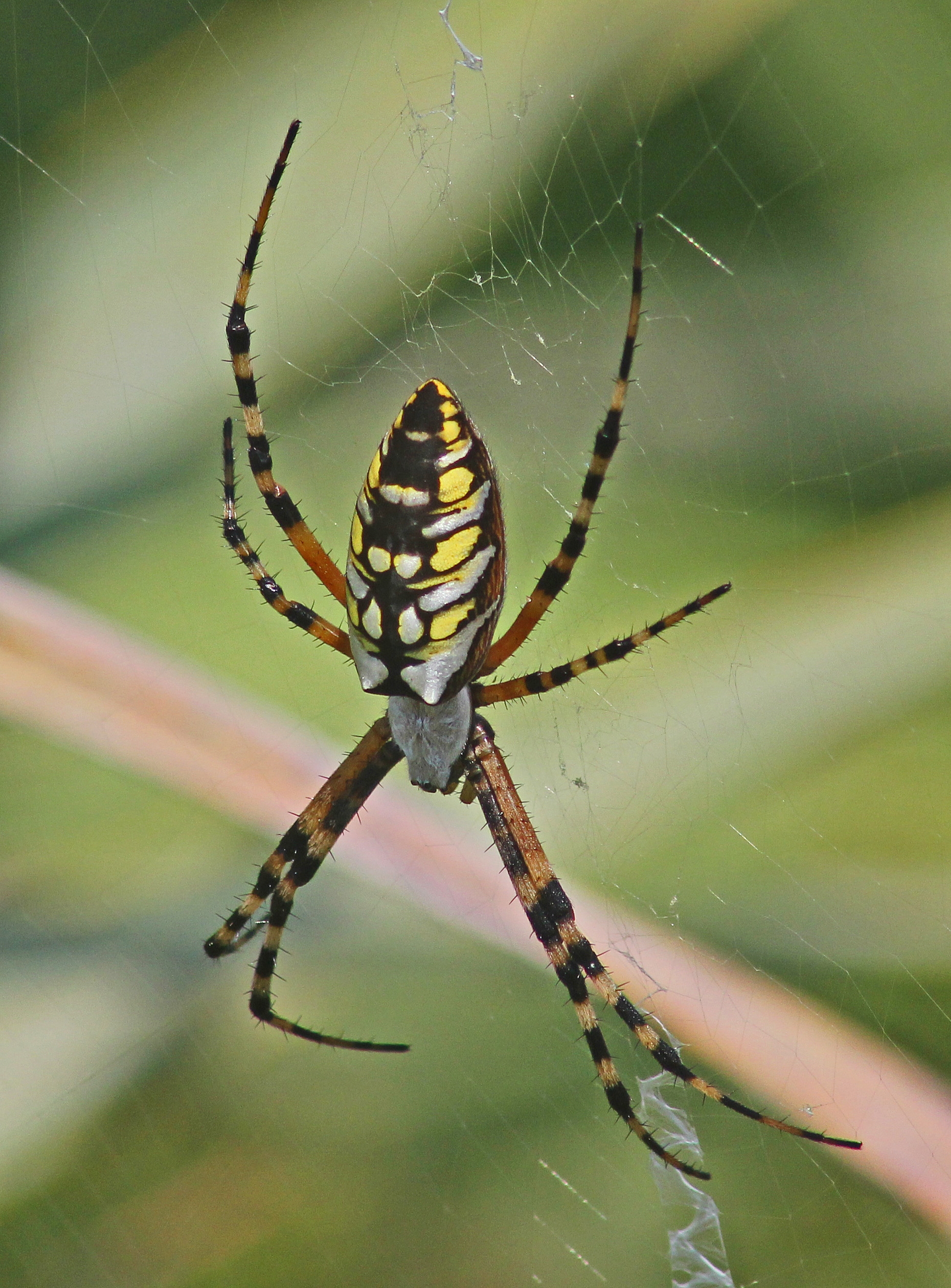
Dark Web Poison Most Popular Markets 2022
Datasets. datasets have provided data to the NBN Atlas for this species. Browse the list of datasets and find organisations you can join if you are interested in participating in a survey for species like Argiope bruennichi (Scopoli, 1772) Accepted Name. Source. Argiope bruennichi (Scopoli, 1772) UKSI. Common Name. Source.

Argiope bruennichi (WASP Spider) This spider is found accr… Flickr
Argiope bruennichi is commonly known as the wasp spider. In Australia, Argiope keyserlingi and Argiope aetherea are known as St Andrew's cross spiders, for their habit of resting in the web with paired legs outstretched in the shape of an X and mirroring the large white web decoration (the cross of St. Andrew having the same form).

Argiope Bruennichi, lots of them D YouTube
The Wasp Spider, known scientifically as Argiope bruennichi, belongs to the family Araneidae. It is renowned for its striking appearance, characterised by its black and yellow markings, which often resemble the colouration of wasps.. Despite their venomous bite and warning colouration, Wasp Spiders face threats from various predators. Birds.

Argiope Bruennichi at Praha Zoo YouTube
In northern France the author has recorded Argiope bruennichi in large numbers in unmanaged damp grassland. The large orb webs are slung low down in the vegetation and the adult spider is easily hidden by the surrounding herbage. Grasshoppers form the main food item. The large urn shaped egg cocoon is positioned in the higher levels of.

Dried Argiope bruennichi specimen Wasp spider that was fou… Flickr
Argiope bruennichi males are able to copulate only twice due to genital mutilation during mating. They may choose to copulate with one female (monogyny),. The bite was described as a needle-like puncture with subsequent swelling about the site, nausea, dizziness, and flulike symptoms that persisted for several days (C. Moore and G. B.
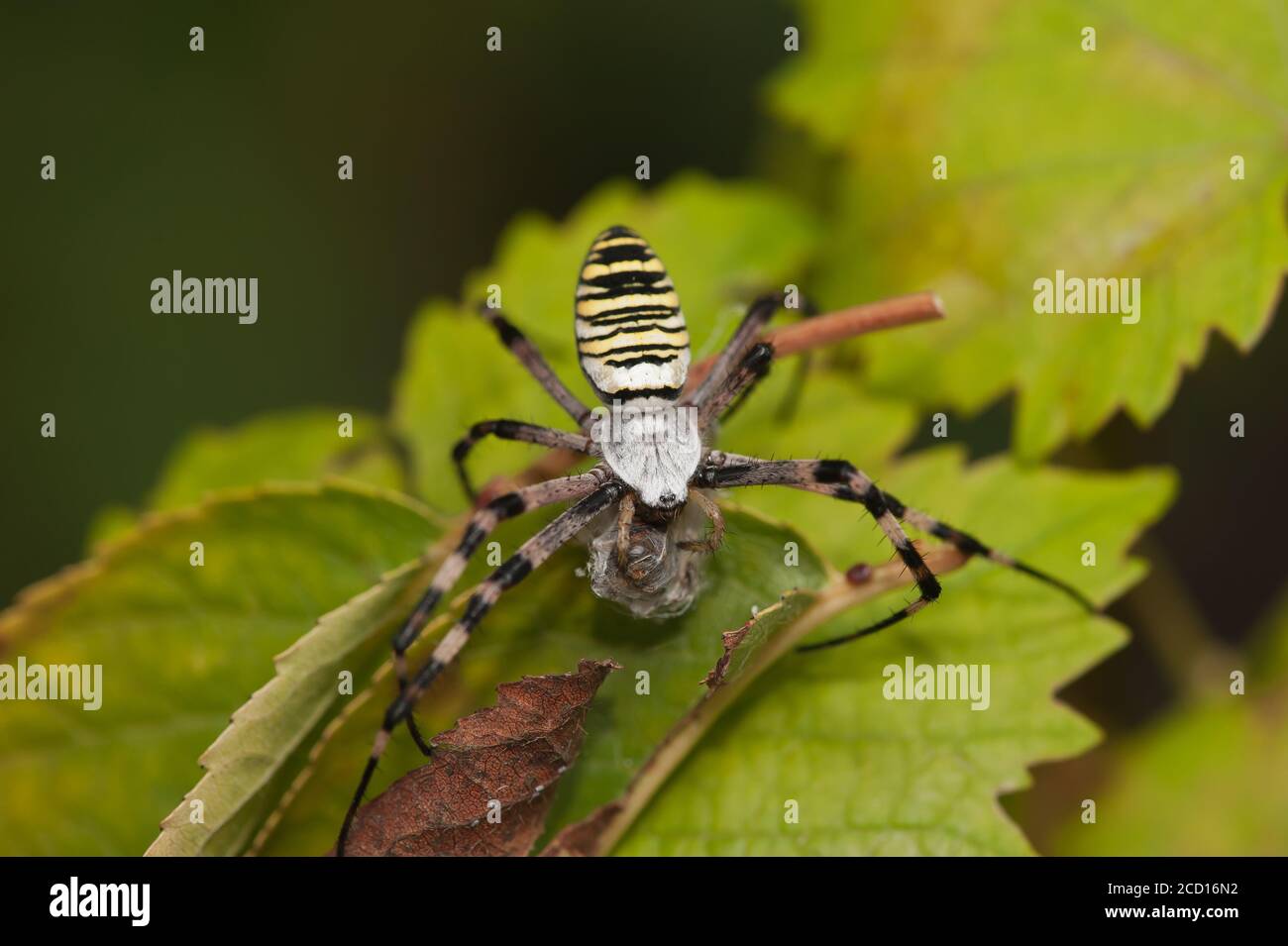
asp spider Argiope bruennichi . Black and yellow stripe Argiope
Argiope bruennichi ( wasp spider) is a species of orb-web spiders distributed throughout Central and Northern Europe, North Africa, parts of Asia, and the Azores archipelago. Like many other members of the genus Argiope (including St Andrew's Cross spiders ), it has strikingly yellow and black markings on its abdomen.

Argiope bruennichi (Scopoli, 1772) amatafoto
Its bite causes a mild local pain. There are also other varieties of Argiopes - The Banded Argiope and Silver Argiope being two that have been sent in frequently. See their photos and information below as well as other argiopes. Codorus. Argiope Bruennichi Argiope Bruennichi is a spider found across most of Europe and the south of England.
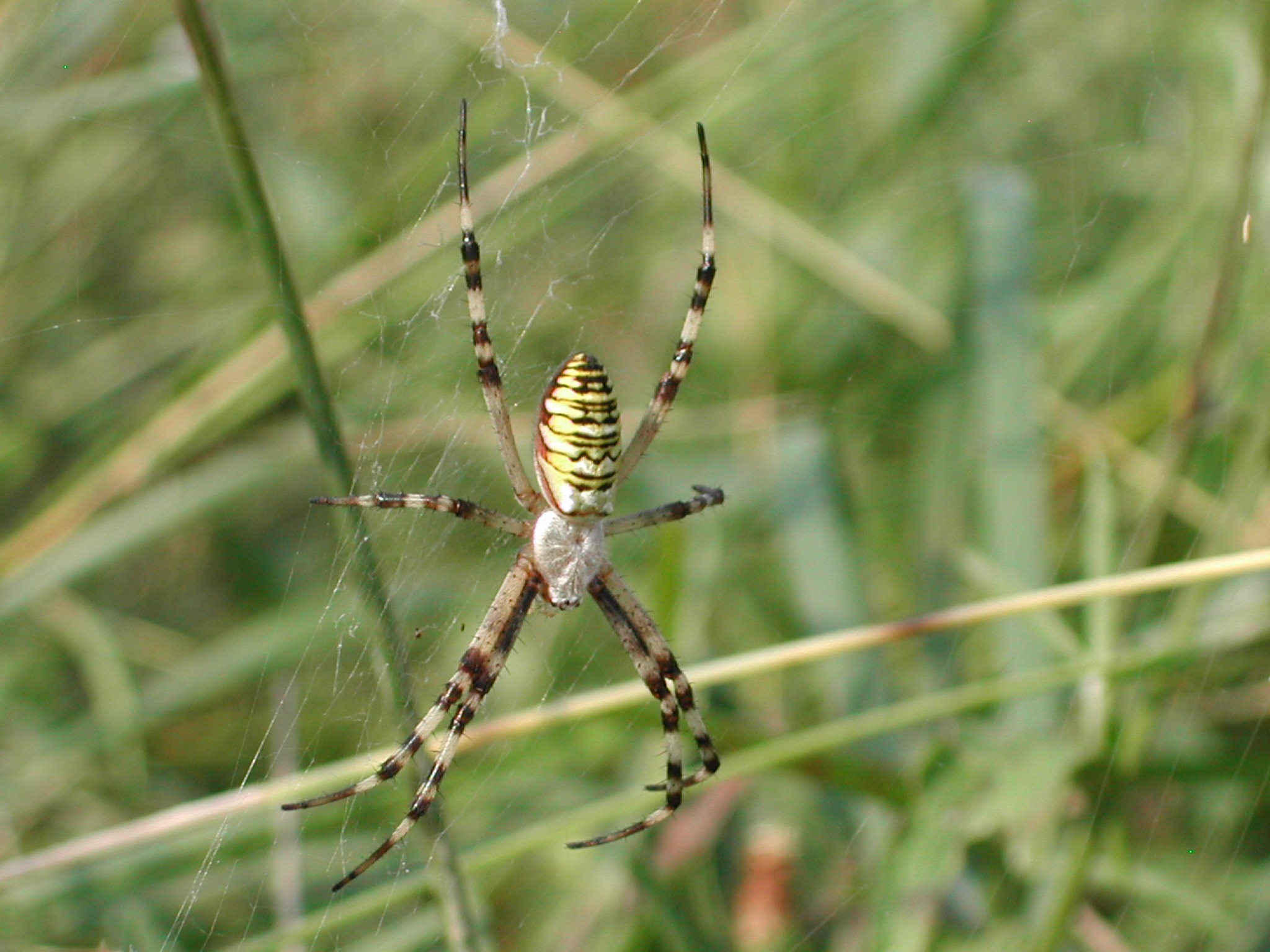
Argiope bruennichi (Scopoli, 1772) neobiota.lu
Argiope was first recorded in Britain in 1922 when it was caught at Rye in East Sussex. The spider is now widespread in southern England coast and is rapidly spreading north. To breed it requires a minimum of three months warm weather and a mild winter. With the shift in our climate, these conditions are becoming increasingly more frequent.